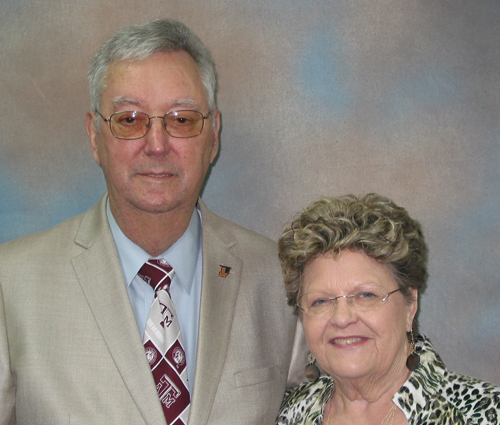When Linda Matthews started having trouble standing up out of a chair, she wasn’t surprised. She was 70 years old, about the same age as her mother when she was diagnosed with inclusion body myositis (IBM).
“I was her caretaker, so I knew all about IBM,” Linda says. “As soon as I started showing symptoms, I went to my doctor and I said I’ve got IBM. They did the muscle biopsy and the bloodwork and the EMG. Within a week, it was definitely diagnosed.”
Often when someone is diagnosed with a disabling condition like IBM, they rely on their partner or a family member to care for them as the tasks of daily living become more difficult to manage alone. Linda, however, was already serving as caregiver for her husband Bill, who had been recently diagnosed with a different rare, autoimmune muscle disease: myasthenia gravis (MG).
In March of 2012, Bill had heart bypass surgery. About a month or so later during a routine eye exam, his ophthalmologist noticed his eyes looked a bit droopy. Linda’s brother, who had a friend with MG suggested he see a neurologist. When he did, it didn’t take long for the diagnosis to be confirmed. Bill says his neurologist thought it was the surgery that set it off.
Despite their disabling diagnoses, the Matthews do not despair. In fact, sharing similar diseases makes them more sensitive to each other’s needs. They have many of the same symptoms—muscle weakness, fatigue, mobility challenges—so they each understand, for example, when the other says they need to rest.
“Nothing is as important as getting the rest you need and taking care of yourself,” Linda says. “And it’s good that I know he’s got my back. I can say, ‘No, not right now,’ and I don’t have to justify it.”
“Sometimes you can tell when the care partner doesn’t understand that,” says Bill of other couples they’ve met. “And you can see how difficult it makes it for the person who’s got the disease. In a way, it’s to our advantage that we understand firsthand what the disease is doing to each other. We don’t have to have that fight.”
Having her mother pave the way for her has also made Linda’s journey just a bit easier. She knows what to expect, and she can plan accordingly as her muscle weakness progresses.
When she saw a Hoyer lift at an estate sale, for example, she scooped it up, knowing that one day it may come in handy if she starts having trouble moving from the bed to the chair. She has a motorized wheelchair that somebody gave her. It’s parked in the garage, though, since she still gets around fine with a rollator. The couple also recently traded their car for a wheelchair accessible van.
When they downsized their home earlier this year, Linda and Bill moved to a one-story (stairs had become a challenge) duplex next to their daughter’s family. Before they moved in, they remodeled the house to accommodate their future needs, adding a roll-in shower, raised toilets, grab bars in the bathroom, and wider doors that will accommodate a wheelchair.
The one thing that couldn’t be retrofitted for accessibility, though, was the kitchen. But Linda just winks and says, “Maybe by then I’ll teach Bill to cook, because I’m the one in the wheelchair.”
That’s not a problem for Bill. “We’ve been married for 56 years. We know how it’s done,” he says.
Linda and Bill feel very lucky to have the support of their family. They love living next to their daughter, son-in-law, and nine-year-old grandson and call on them when they need a hand. When they want to give their son-in-law a break—like when Bill needed to get to the hospital recently for cataract surgery—one of their two sons is always willing to step in and help out too.
Being part of a patient support community helps the couple in other ways. They belong to MG Texas, an MG support group in the Dallas/Fort Worth area. And they are active in Northeast Texas support group of The Myositis Association as well as on Facebook forums through Myositis Support and Understanding.
Getting together with others who share their disease helps Linda and Bill learn the medical ins and outs of both diseases, so they are better able to care for themselves and each other. It also gives them access to a whole pool of practical information that’s not readily available elsewhere: things like who is the best neurologist in a certain area, or tips and tricks people have used for managing certain challenges.
“The myositis Facebook site is wonderful, because people ask questions, and a lot of times it’s a question I have too,” Linda says. “And then in the MG group, we love it when we are able to go to the meetings. They’re always interesting, with new speakers and new ideas. It’s also nice getting to know other members who are in the same situation as we are.”
While living with conditions they know can cause significant health concerns, Linda and Bill remain upbeat.
“My mother was a wonderful example for me how to live my life with this disease,” Linda says. “You just roll with it and try to figure out another way of accomplishing your tasks.”
